1973 found me in New Orleans exhibiting at an antiques fair. A somewhat pudgy short man wearing a dark suit over his white t-shirt stopped by my booth. Looking at my trade sign, he asked if I was really from Israel. Receiving an affirmative answer, he began questioning me as to whether I thought it was a safe place to let his teenage daughter go for a gap-year study program.
Within a few minutes he learned that, four years previously, in my pre-Israel career, I had been the contact in the South, responsible for screening students for that program. As we talked more, he became very interested in the Roman antiquities I had on sale. He told to me that he was a major collector of pre-Columbian antiquities (years later I learned that it was he who introduced pre-Columbian to the USA market).
One thing led to another and I spent the next two mornings, before the show opened, visiting with him in his warehouse, discussing rare books, Israel, and philosophy without once mentioning Preservation Hall. So I didn’t know that this man, Larry Borenstein, was the instigator and founder of this institution nor did he know that the only reason I chose to exhibit at an antiques fair in New Orleans, was because it allowed me to spend every evening at the Hall satisfying my passion for this music.
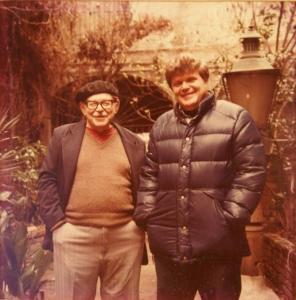
As is often the case, because we tend to have a one-dimensional view of people met causally, the opportunity for a fuller relationship is lost. In the case of Larry Borenstein, despite thousands of words that have been published in numerous publications telling the story of Preservation Hall, little has been dedicated to him.
Few are aware that the Hall, which helped spread the sounds of the original black music around the globe, owes its existence to an unlikely association between a transplanted middle-aged mid-westerner and a young Pennsylvania couple who stopped over in New Orleans as part of an extended honeymoon trip.
Most people identify the late Allan Jaffe as the father of Preservation Hall which today is managed by his son Ben. There is little doubt that Allan Jaffe’s genius in taking the band “on the road,” playing concerts nationwide, was the key factor that changed Preservation Hall from just another local venue for listening to good old-time jazz into the international icon it has become today.
None of this would have been possible without Larry Borenstein, the transplanted mid-westerner establishing, in his art gallery, a place where one could hear these musicians. William Carter in his definitive history Preservation Hall (Cassell, 1991), writes “If Russell was the Hall’s spiritual godfather, E. Lorenz Borenstein was its practical founder.” His contribution was paramount to the future success of the Hall.
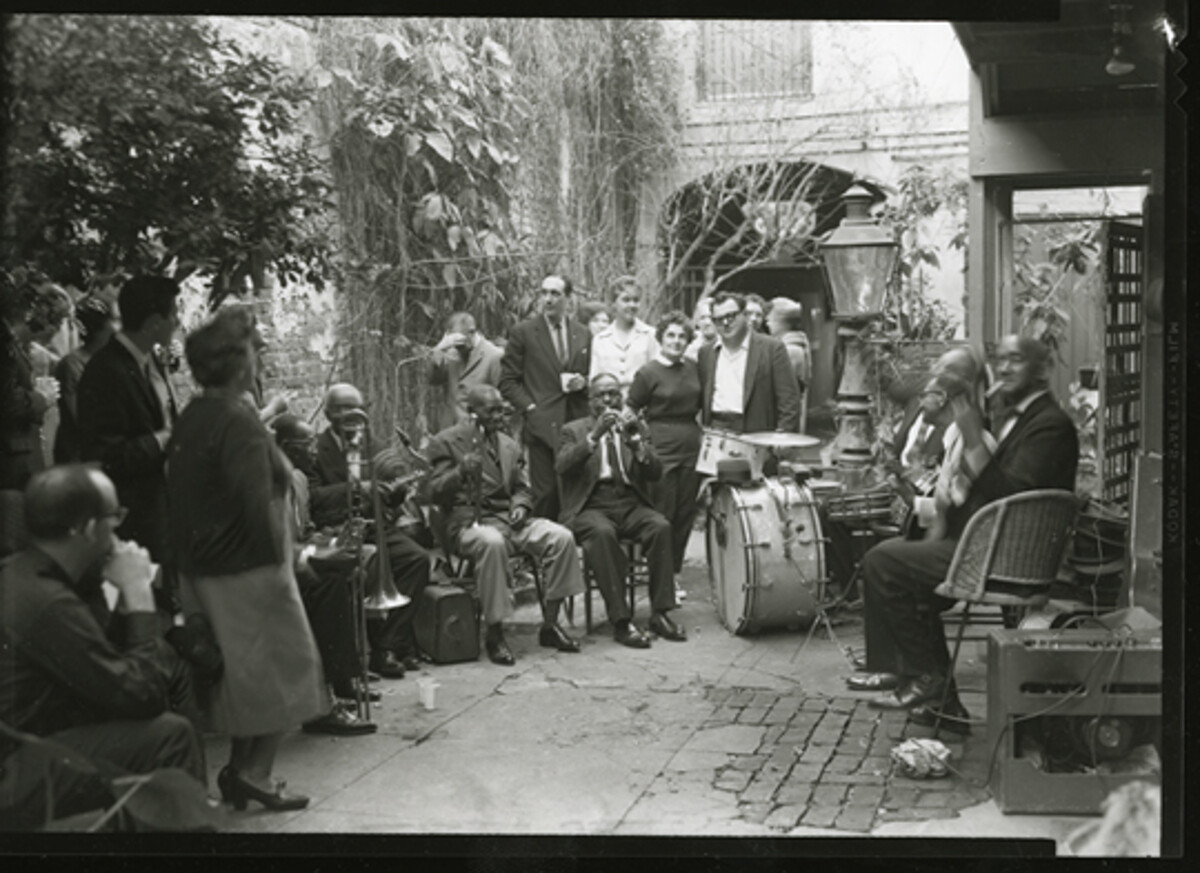
Borenstein had arrived in New Orleans on December 7, 1941, the day Japan attacked Pearl Harbor. He was on a business trip. Told by his boss to remain there because “It’ll be over in a couple of months,” he remained for the rest of his life, becoming a successful art dealer alongside his various business ventures.
In 1955, Borenstein started inviting Kid Thomas and other local musicians to “rehearse” in his art gallery, located in what is today Preservation Hall. The musicians were supported by passing the kitty. By 1961, these sessions had morphed into the current business. William “Bill” Russell, since 1940 a leading figure of the New Orleans Jazz “Revival,” was intimately involved, despite having no business interest in the venture.
In 1961, the recently married Jaffes arrived in New Orleans as part of an extended trip and ended up making it their home. It was their mutual love of the music that brought them together with Borenstein.
A fascinating coincidence for both Larry and Allan was that both had an ancestor who served as a musician in the Tsar’s Russian Imperial Army. For Larry it was his father, for Allan his grandfather. What part it played on their love of the special sounds of New Orleans jazz we can only guess.
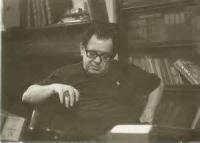 Borenstein was a complex character equally liked and disliked—there did not seem to be any middle road. According to Jaffe, those who did not like him were those who knew him least. He had a reputation as a tough businessman while at the same time harboring a well-hidden history of generosity especially to the musicians.
Borenstein was a complex character equally liked and disliked—there did not seem to be any middle road. According to Jaffe, those who did not like him were those who knew him least. He had a reputation as a tough businessman while at the same time harboring a well-hidden history of generosity especially to the musicians.
Rex Ross, who was born above Preservation Hall, describes his father, Al Rose, and Borenstein as “probably the two most intelligent men I’ve ever known.” Rose was himself a complex personality who as a Jazz historian was actively involved with Borenstein on a voluntary basis in the early days.
The black musicians featured in the first days of the Hall had mostly remained in New Orleans after their compatriots migrated north in the late 1920s. Most had endured decades of poverty, hunger, and humiliation with few opportunities to practice their craft. Many of them had played a part in the creation of the new sounds called Jazz that swept out of New Orleans in the 1920s. After surviving the depression years and the bigotry, now in their late 60s and older, despite the revival in the early ’50s, they had little sense that a new future was about to begin.
Imagine the feeling of these musicians, who, in 1961, had reached the age where there are no illusions about life, suddenly confronted with being offered the magical opportunity to play their music to a whole new audience. The sound that came out of their playing was that of the old familiar traditional New Orleans tempered with the joie de vivre of being able to once again play their music to adoring audiences all over the world, to say nothing of the financial security that came with it. Who cared if there was an occasional flat note? For these musicians it was the ultimate “born again” experience which they communicated to the listener with a feeling that only those who had lived it could.
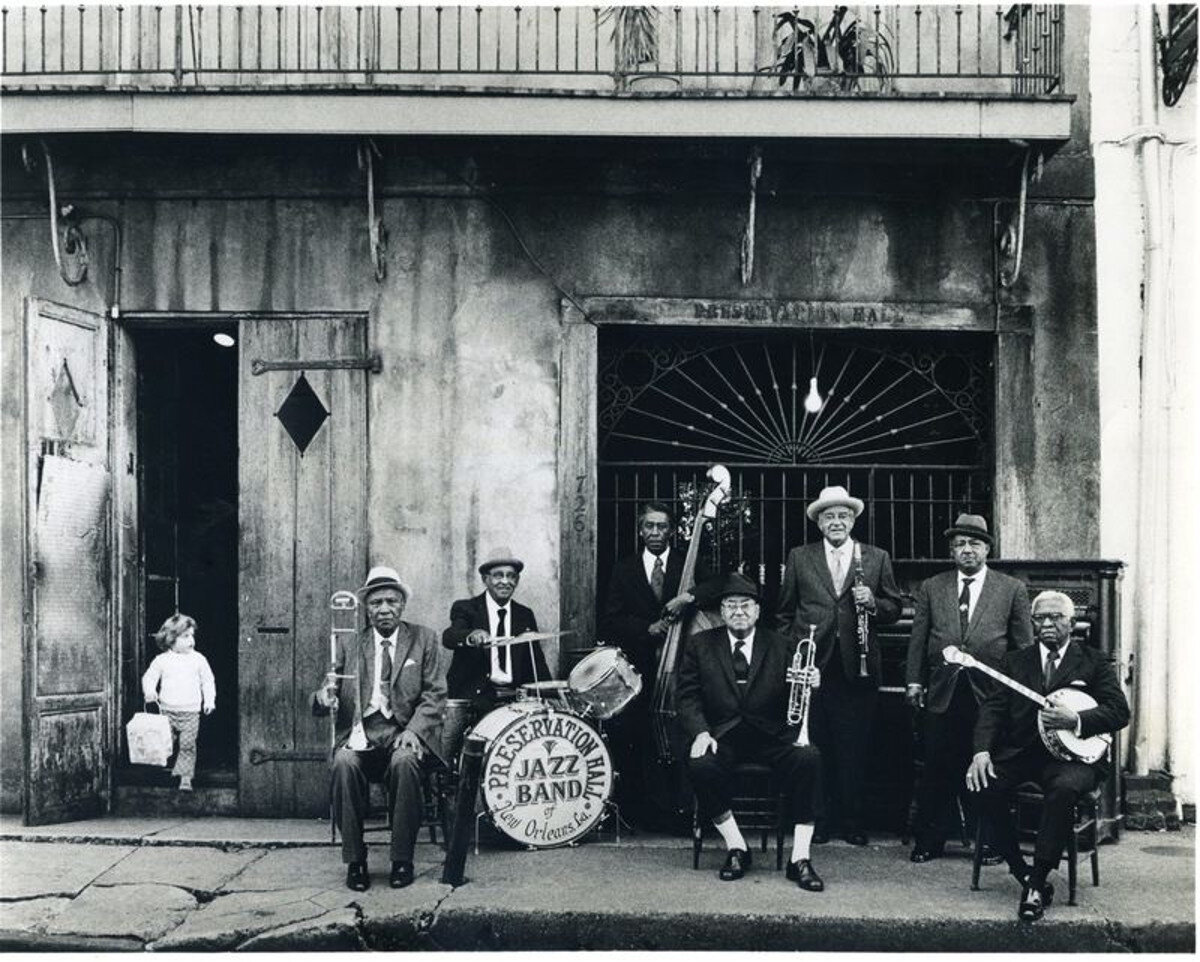
Hundreds of thousands have experienced the warm, exuberant toe-tapping sounds of these elderly musicians—the fortunate few who managed a visit to the Hall itself, the majority at one of the many concerts at venues throughout the USA, as well as every major European city plus Japan and Israel, for the next three decades,
This is what Larry, Alan, and Bill created. The accomplishment of these three men is even more remarkable given the background of the time. New Orleans was a deeply segregated community, not only along racial lines. White society had carefully honed traditions where everyone understood their place and newcomers, especially Yankees, were not easily welcomed. Being Jewish just added another handicap.
Inevitably that special time had to end. Today’s Preservation Hall truly preserves the music of the period; they are excellent musicians both at home and on tour. But no matter how good, they cannot express the atmosphere of those first three decades. It was filled with the unfiltered sounds from an older group of musicians who were born and grew up in New Orleans in the earliest years of this music. The current generation of musicians, talented as they are, never, for the most part, had to suffer the indignities of their elders.
My regret is, that after that first meeting, I was not able to return to New Orleans again until 1982, just after he had passed. We will always be grateful that Borenstein’s love of the music helped preserve it for all us.
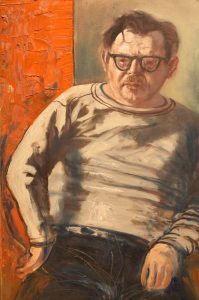
Finally, a word on Carter’s book Preservation Hall mentioned above. It is must reading for anyone who wants to get a sense of the musicians who pioneered in making this institution famous worldwide. Carter writes a loving portrait, based on intimate association with them as they toured. He captures their laughter and their foibles. He writes of them as human beings rather than idols on a pedestal. From his first words, anyone who was lucky enough to experience those early days at the hall will recognize that his book is as authentic as one can get.
A footnote: Borenstein had a connection with the current Noel Rockmore exhibition noted in a The Syncopated Times February 2020 article where it states that some of Rockmore’s “most famous work” was commissioned by Borenstein. Rockmore himself wrote “…Borenstein’s commission on the Preservation Hall series…was a jolt to most of the work habits I had…” according to Carter’s book.
Editor’s Note: Frank Farbenbloom can be forgiven for telling the most common one paragraph version of the founding of Preservation Hall in his personal remembrance focused on Larry Borenstein. But this summary leaves out the legacy of Barbara Reid and of Ken Grayson Mills. Their legacy is explored in detail by Richard Ekins’ lacroixrecords.com, where you may also find a five part series about Larry Borenstein.
Frank Farbenbloom is a traditional jazz supporter based in Israel.






















